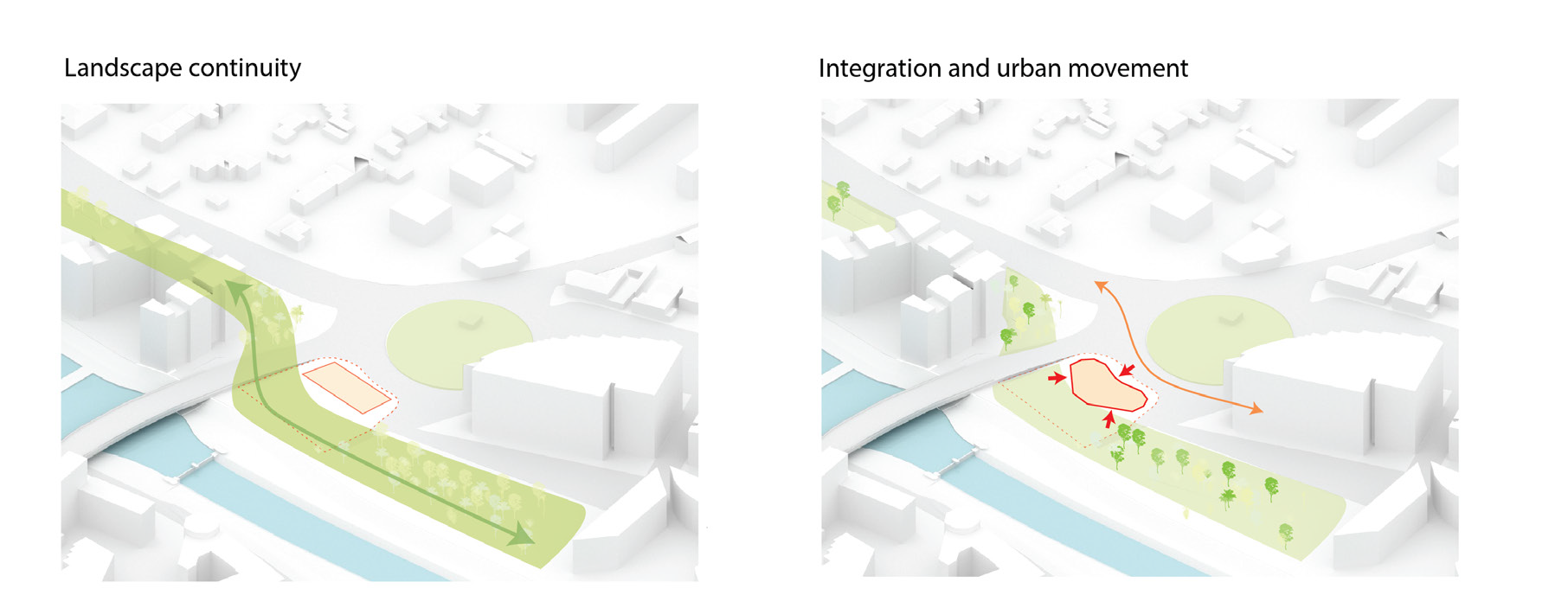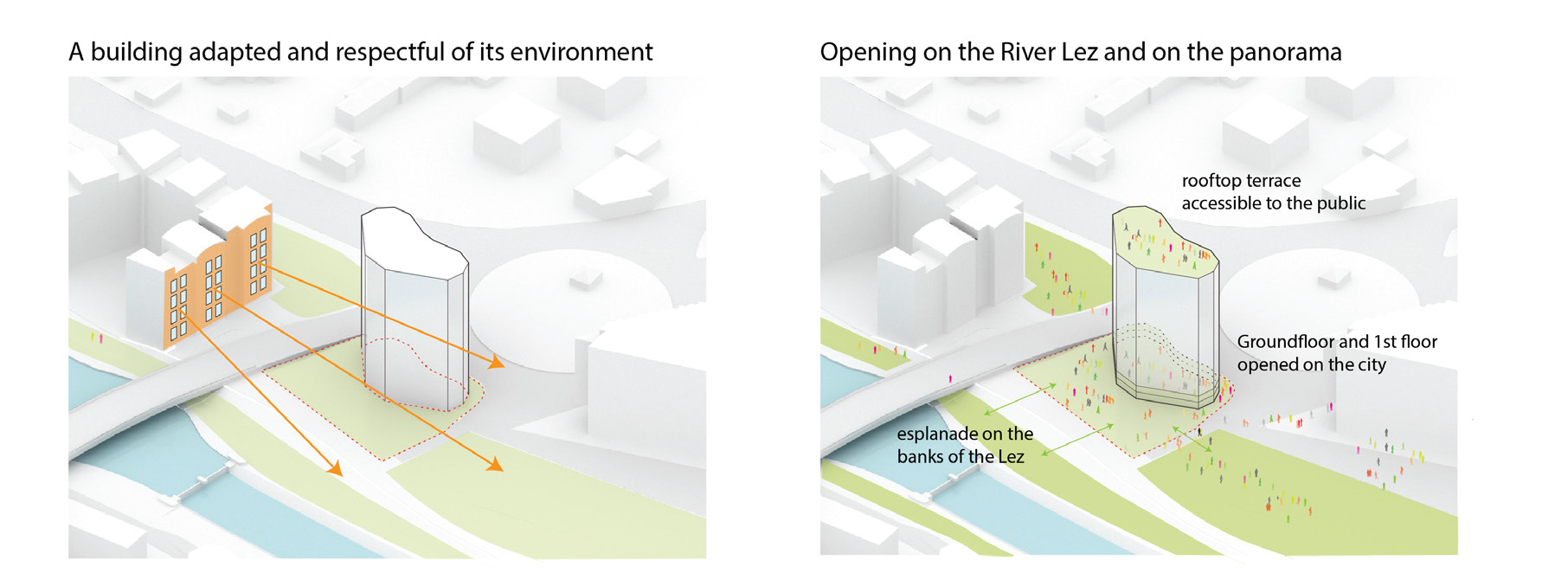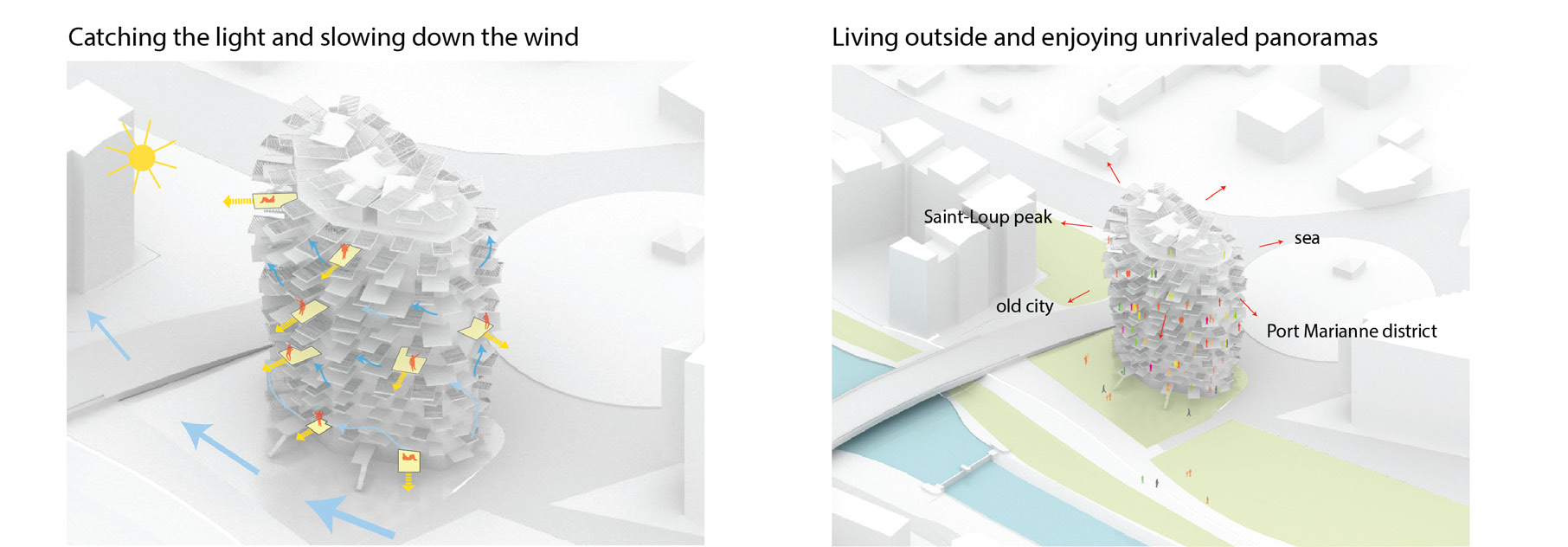Inviting the Outdoors In
When the Montpellier City council expressed the need to build a bold project to enrich the city’s architectural landscape, three architects, two local firms with a practice of their own and Sou Fujimoto from Japan, joined forces to create L’Arbre Blanc, a residential tower with many technical innovations that include terraces with cantilevers up to 7.5 metres.
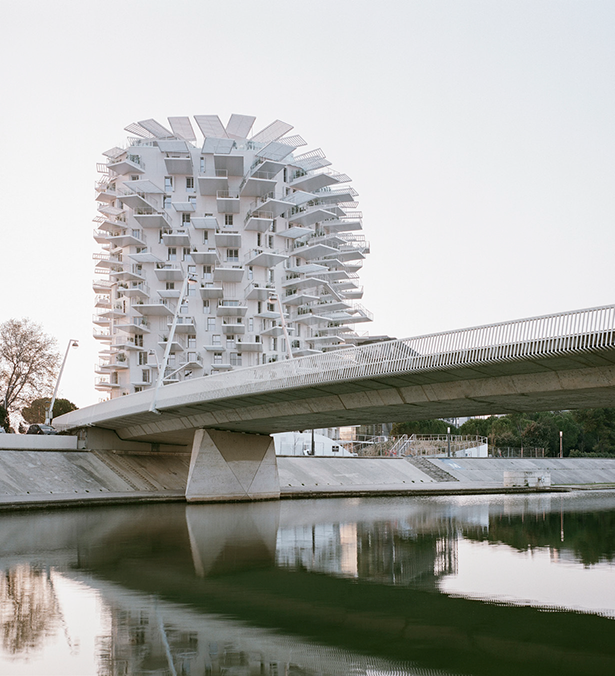
 ln 2013, the Montpellier city council launched the “Folie Richter” competition that sought to identify a blueprint for a beacon tower to enrich the city’s architectural heritage. The RFP stressed the desire for a project that fits into its environment and includes shops and homes. The brief was clear: the city hall wanted a team made up of a young architect working with an experienced colleague.
ln 2013, the Montpellier city council launched the “Folie Richter” competition that sought to identify a blueprint for a beacon tower to enrich the city’s architectural heritage. The RFP stressed the desire for a project that fits into its environment and includes shops and homes. The brief was clear: the city hall wanted a team made up of a young architect working with an experienced colleague.
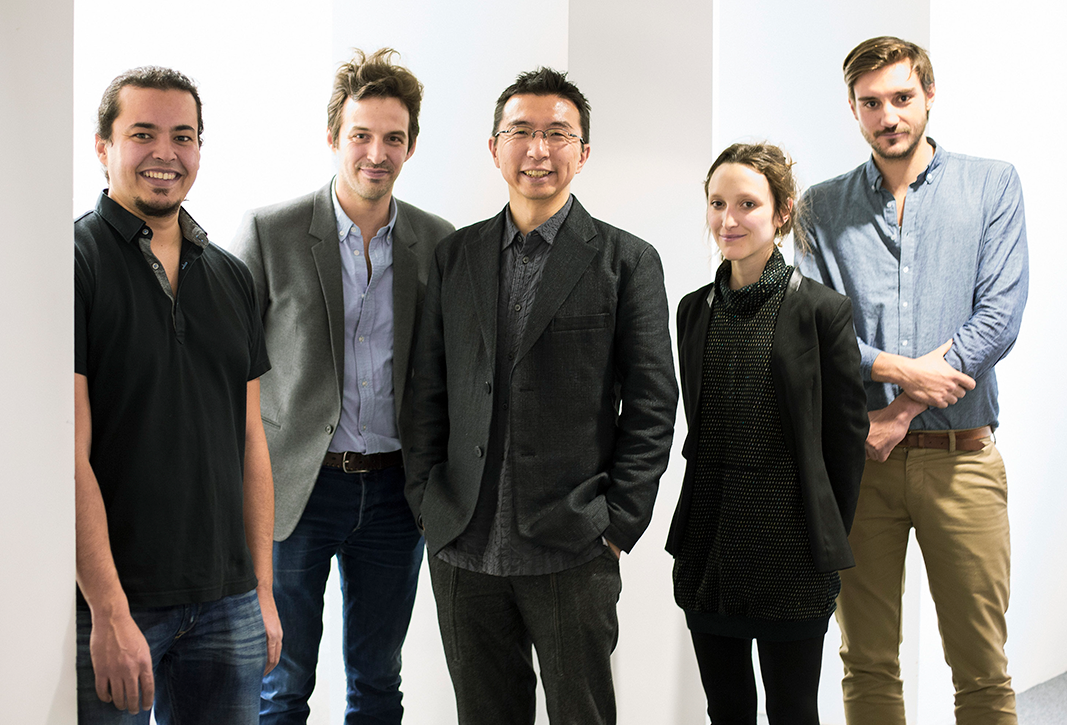
From left to right : Manal Rachdi, Nicolas Laisné, Sou Fujimoto, Marie de France, and Dimitri Roussel, the architects behind this project
Manal Rachdi and Nicolas Laisné, who each run their own practices, decided to call on the Japanese architect Sou Fujimoto. All three of them seek inspiration in nature even if they express it in very different ways. On this project, these three visions connected and became mutually enriching.
To reinvent the tower, the architects focused on the human dimension, creating public spaces at the bottom and top of the building: the ground floor is a glass-walled space opening out onto the street, while on the roof there is a bar open to the public and a common area for residents so that even the owners of first-floor apartments can enjoy the view.
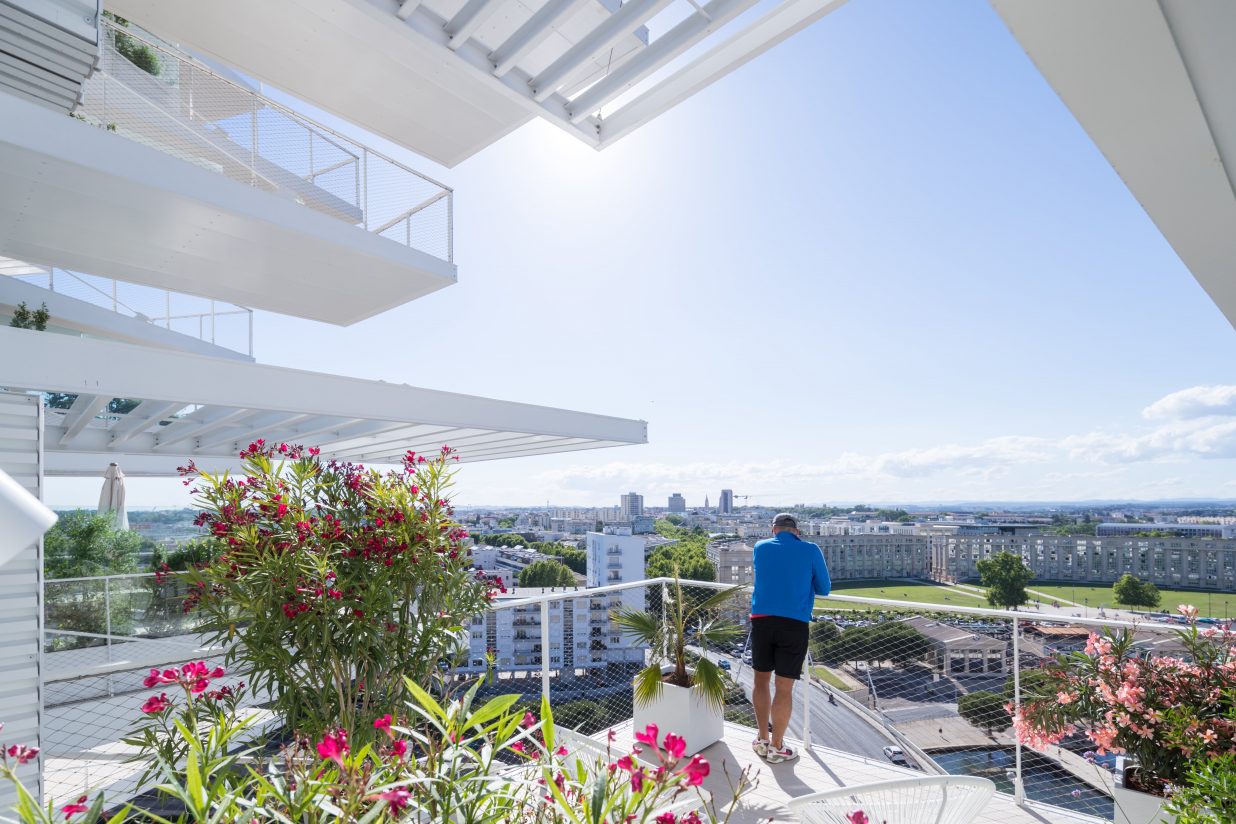
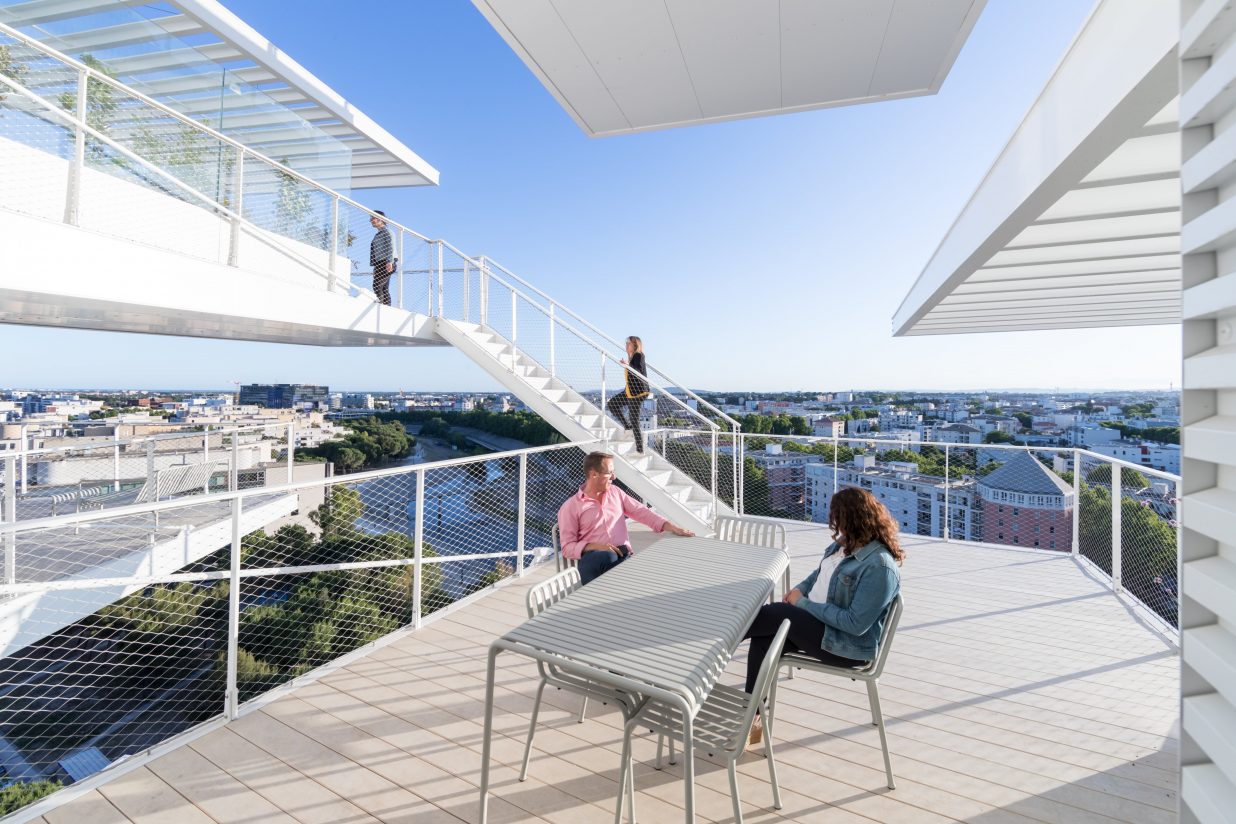 But what sets the project apart is its design. The three architectural practices devised a building inspired by a tree, with balconies that branch off the trunk and shades that sprout out of and protect its façade. The attention paid to its setting, and to local lifestyles, guided the architects throughout the design phase. The building could also be envisioned as a flower, with petals adding to the beauty of its structure.
But what sets the project apart is its design. The three architectural practices devised a building inspired by a tree, with balconies that branch off the trunk and shades that sprout out of and protect its façade. The attention paid to its setting, and to local lifestyles, guided the architects throughout the design phase. The building could also be envisioned as a flower, with petals adding to the beauty of its structure.
The many balconies and pergolas promote outdoor living and enable a new type of relationship between residents. Each apartment boasts an outdoor space of at least 7m² (the largest is 35m²), with multiple levels of privacy and layout options; residents of the duplex apartments can move from one balcony to the other. to make sure that all the apartments have pleasing views, the architects sculpted the blueprint with a series of spatial experiments using physical 3D models.
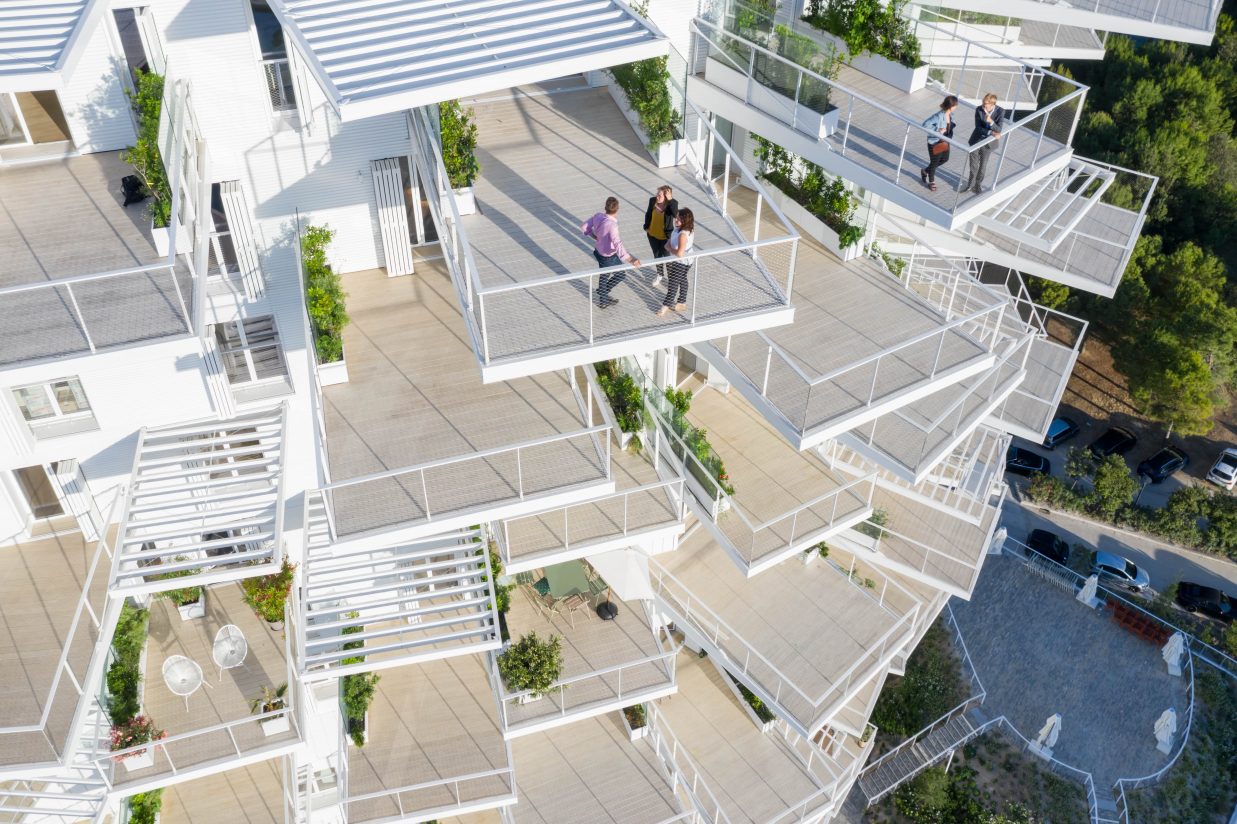 The many technical innovations of L’Arbre Blanc include the terraces, whose cantilevers, which are up to 7.5 metre-long, constitute a world first. These exceptional outside spaces are fully-fledged living rooms that are connected to the dwellings in such a way as to allow residents to live inside and outside, a luxury for a city bathed in the sunshine 80% of the year!
The many technical innovations of L’Arbre Blanc include the terraces, whose cantilevers, which are up to 7.5 metre-long, constitute a world first. These exceptional outside spaces are fully-fledged living rooms that are connected to the dwellings in such a way as to allow residents to live inside and outside, a luxury for a city bathed in the sunshine 80% of the year!
The proportions of the balconies emphasize this aim to embrace the outdoors, as do the leaves that fold out in search of the sunlight. These generous balconies are also a response to the need for environmental solutions closely tailored to the “ecology of the south”. Forming an effective protective veil for the façade, they provide the necessary shade and break up skew winds to help air circulate more harmoniously.
The architects adopted a new take on tower living for this mixed-use development. To cure inaccessible tower syndrome, from the earliest discussions there was a real focus on public space, including extending a landscaped park along the Lez River and opening the tower up to the public.
The 17-storey building is a full participant in city life, aiming first and foremost to be accessible to all the people of Montpellier, with an art gallery on the ground floor and a rooftop bar linked to a panoramic garden. By allowing people to take physical ownership of the tower, it will become an object of pride for the people of Montpellier and a tourist attraction.
Taking SCALE readers through the process was put into action when the two young French architects, Manal Rachdi and Nicolas Laisné started their liaison with Sou Fujimoto who had never taken on a large scale project in France, wrote to the Japanese architect and when he replied positively to their e-mail. The Japanese architect said he was interested but wanted to know more about the two Frenchmen’s objectives. “The discussion we had on Skype put my mind at rest. We then met up in my offices, where I realized we really were on the same wavelength,” recalls Sou Fujimoto. Manal Rachdi agrees says, “What we have in common is that nature inspires us, but we translate that very differently into our work. So we thought there would be great value in comparing our takes on this competition.”
According to Sou Fujimoto, “An understanding of the site and people’s lifestyles in Montpellier guided this project, which conveys a new vision of housing, one which is more harmonious and optimistic. Even if the expression is often clichéd, creating true living spaces dovetails perfectly with my vision of architecture. To do that, I consider a number of data points in every project: the climate, the way of life, aesthetics, scales, nearby landmarks, etc. It is an essential process for producing meaningful architecture.”
“The process also involved addressing living high up and the many inherent interactions: between the building’s residents on different floors, but also between the building and its environment. So, we designed a building with a flexible, almost in-motion look, which changes depending on the light and the weather, with balconies reaching out for light and the horizon,” he says.
Programme: Residential (113 homes), art gallery, restaurant and panoramic bar
17 storeys, 3 parking levels
Architects:Sou Fujimoto Architects, Nicolas Laisné, Dimitri Roussel, OXO Architectes
Marie-Laure Coste-Grange (project management)
Clients: Opalia, PromeoPatrimoine, Evolis Promotion et Crédit Agricole Immobilier Languedoc-Roussillon
GSA Réalisation (Delegated contractor)
Construction works management: CAP Conseil, icK
Landscape designer: Now Here Studio
Engineering: André Verdier (Structure), ARGETEC (Fluids), Franck Boutté Consultants (Environmental), VPEAS
(Cost management), Relief GE (Surveying, Roads and services), Les Eclaireurs (Lighting),
SOCOTEC (Inspection), Efectis (Fire performance)
Surface: 10,225 m2
Budget: €20.5m before tax







